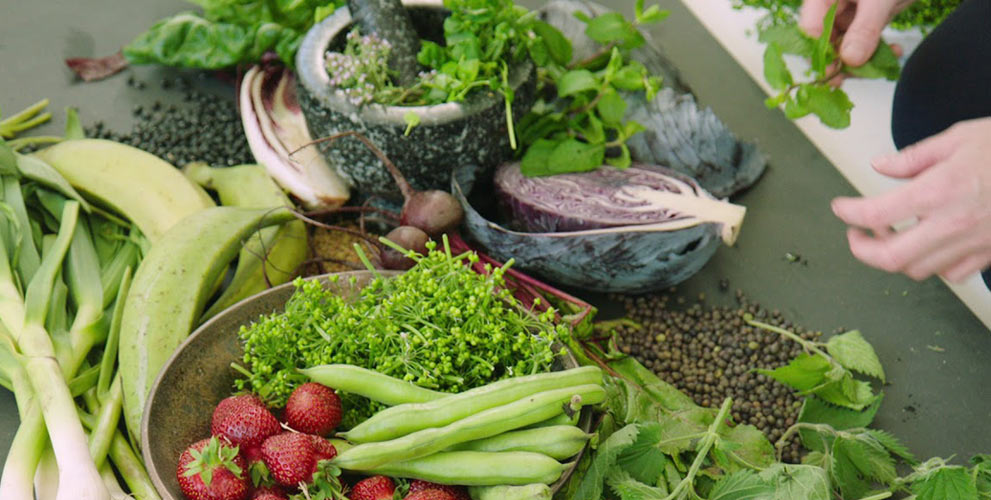The two authors of Happy Food are well qualified to write on their topic.
The two authors of Happy Food: How eating well can lift your mood and bring you joy are well qualified to write on their topic.
Niklas Ekstedt started his first restaurant at the age of only twenty-one and has since interned at several Michelin-starred restaurants around the world. While running restaurants in Stockholm he has also made several series of cooking shows for Swedish national television, including one aimed at children.
Henrik Ennart is a journalist and author who writes for the Swedish daily newspaper Svenska Dagbladet on health, food and ageing, makes television programs, and also lectures on these topics. The relationship between food and good health has long been known but the specifics of how gut health and the food we eat can impact our mental health is a new field.
Over 50% of research into the gut biome has been published in just the past four years, so clearly there are still many questions to be answered. The book highlights the ground-breaking research undertaken by Professor Felice Jacka and her colleagues at the Food and Mood Centre of Deakin University in Victoria which has clearly demonstrated that food can help lift the mood of sufferers of depression.
The first part of the book presents the science behind lifting one’s mood through food. We have around 1.4kg worth gut bacteria but it is the mix this flora which is most important. In a modern western diet, many people eat a small variety of foods with just twelve plant and five animal based foods making up 75% of all the food on the planet. Given the worldwide obesity problems, it’s no surprise that sugar cane tops the list.
The research and scientific detail is informative and well-presented except for the horrendous neon orange and green text used to highlight certain details which are conducive to eye strain. Similarly, the pale grey text used for recipes in the second half of the book is a poor choice. This is a shame as otherwise the book is a high quality production.
I imagine designer and illustrator Katy Kimbell’s choice of neon green and orange is meant to demonstrate that, although the book contains lots of scientific facts and research results, it is not a ‘heavy’ academic text. Whatever the motive, I found the cartoonish illustrations and colour choices both distracted and detracted from the book’s important message.
The recipes are virtually all vegetable, grain or nut based, although there are a couple of meat recipes included. Dessert recipes are also very thin on the ground.
Sweet potato with chard, garlic, olive oil and walnuts (page 171)

This recipe was simple to make and the instructions were easy to follow. I substituted spinach for chard as I had some growing in the veggie bed and it made a filling vegetarian dinner.
Curry roast whole cauliflower and almonds (page 167)

This provided an opportunity to cook my favourite vegetable in a new way and it really couldn’t be easier. I ate some hot with a green salad on the side and used the leftovers in a vegetable korma.
Reviewed by Jan Kershaw
Rating out of 5: 4
Distributed by: Bloomsbury Australia
Released: October 2018
RRP: $39.99






















